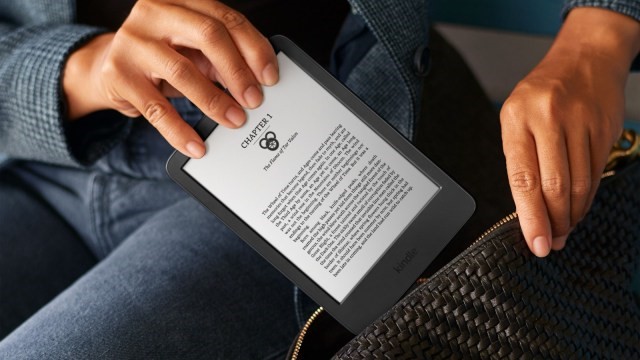Description

Disclaimer: Copyright infringement not intended.
Context
- Electronic Ink, commonly known as E-ink, is a display technology that mimics the appearance of traditional ink on paper.
- This technology has gained popularity due to its low power consumption, readability in various lighting conditions, and its ability to retain an image without power.
Details
- Developed in the 1990s at MIT and now owned by E Ink Corporation, these displays use microcapsule technology to create images and text without the need for a backlight.
- Despite their advantages, E Ink displays face challenges that limit their widespread adoption.
Working Principles
- Microcapsule Composition:
- E Ink displays rely on microcapsules containing positively charged white particles and negatively charged black particles suspended in a fluid.
- The microcapsules are positioned between transparent electrodes.
- Electrophoresis:
- When a voltage is applied across the electrodes, the charged particles move within the microcapsules. Depending on the polarity of the applied voltage, either the black or white particles migrate to the top, becoming visible.
- Bistable Nature:
- E-ink is bistable, meaning it retains its state even when power is removed. Once the particles move to their designated positions, they remain there until a new charge is applied.
- Reflective Nature:
- In contrast to LCD and LED displays that use a backlight, E Ink displays reflect ambient light like paper. This property enhances readability in various lighting conditions.

E Ink vs. E Paper
- E Paper is a broad term for displays mimicking real paper, while E Ink is a specific type within the E Paper category.
- The distinction lies in the use of microcapsules filled with charged particles in E Ink displays, providing a more precise and controlled display technology.
Advantages
- Low Power Consumption:
- E Ink displays consume power only during image changes, enabling prolonged use on a single charge, making them ideal for devices requiring long battery life.
- Reduced Eye Strain:
- The absence of a backlight, coupled with a matte surface and high contrast, reduces eye strain during extended reading sessions.
- Outdoor Readability:
- E Ink displays excel in outdoor visibility, providing clear text even in bright sunlight, a feature lacking in traditional LCD/LED displays.
Disadvantages
- Slow Refresh Rates:
- The primary drawback of E Ink displays is their slower refresh rates compared to LCD and OLED displays, making them unsuitable for dynamic content like videos or animations.
- Color and Resolution Limitations:
- E Ink has limitations in terms of color and resolution, restricting its application in scenarios demanding high color vibrancy and sharp detail.
- Cost Constraints:
- The niche nature of E Ink manufacturing contributes to higher costs, limiting its use to specific applications where the benefits outweigh the expense.
Applications
- E-Readers:
- E Ink displays gained popularity in e-readers like the Amazon Kindle due to their readability and extended battery life.
- Smartphones:
- Startups are exploring E Ink in smartphones, aiming to reduce screen time and enhance focus on communication and productivity.
- Public Displays:
- E Ink is making appearances in public spaces, such as bus stop displays, walking direction signs, and restaurant menu boards, offering a glare-free and readable experience.

Conclusion
While E Ink displays face challenges such as slow refresh rates and color limitations, their unique advantages, including low power consumption and reduced eye strain, position them as a valuable technology for specific use cases. Ongoing research and innovations continue to push the boundaries of E Ink, paving the way for its potential expansion into diverse applications. As technology evolves, E Ink displays may yet become more prevalent, offering users an alternative display experience rooted in science and efficiency.
|
PRACTICE QUESTION
Q. E-ink displays have revolutionized the way we read and interact with digital content. With their energy efficiency, readability, and versatility, they have found applications in various industries. Comment. (250 Words)
|
















